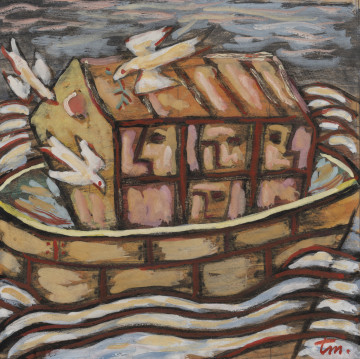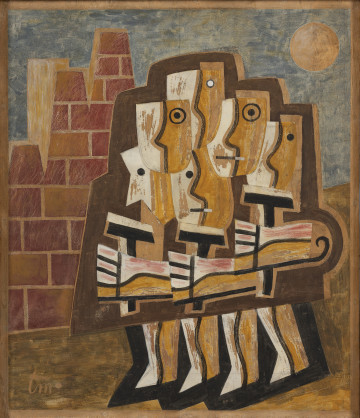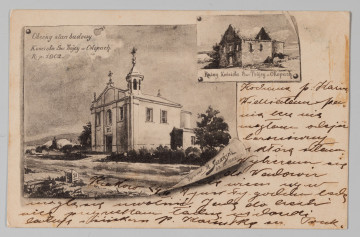
Noah's Ark
1946
National Museum in Szczecin
Part of the collection: European classics of modernity
The barracks of concentration camps and destroyed Warsaw became evidence of Nazi bestiality. Their shocking photographs went around the world, raising questions about the condition of contemporary man, the possibility of the development of civilisation in the shadow of the Holocaust, and the moral obligation of the artist and art after the Holocaust. The camp experiences of left-wing artists and their families were reflected in their accountability works. Similar rhetoric, expressed for example in Paul Colin's shocking poster, accompanied the exhibition Warsaw Accuses, the first exhibition organised by the Bureau for the Reconstruction of the Capital in the rooms of the National Museum, which was later moved to Paris. One of the most symbolic motifs appearing in many photographs - the steel structure of the blown-up Main Railway Station on Jerozolimskie Avenue - was also immortalised in the colourfully depressing series Warszawa 1946 [Warsaw 1946] (1947-1948) by Jaroslav Paur, a student of the Prague Academy of Fine Arts. The painter, who lived in Poland and was fascinated by French currents, surrealism and existentialism, captured on another canvas the construction of the W-Z Route, even before adding the figurative sculptural decorations. When the new doctrine of socialist realism was introduced, the gloomy images of physical destruction and artistic decay were to be replaced by optimistic visions of a bright future. Paur managed to receive the Polonia Restituta award for his works in Warsaw. The monument to the destroyed city (1947-1954) by Ossip Zadkine, showing a deformed human figure with its heart torn out, was soon completely unthinkable, both in the People's Republic of Poland and in the Czechoslovak Republic, which experienced the war in a completely different way.
Szymon Piotr Kubiak
Author / creator
Dimensions
cały obiekt: height: 69 cm, width: 54,5 cm
Object type
painting
Creation time / dating
Creation / finding place
Identification number
Location / status

1946
National Museum in Szczecin

1947
National Museum in Szczecin

1902
National Museum in Lublin
DISCOVER this TOPIC
National Museum in Szczecin
DISCOVER this PATH
Educational path